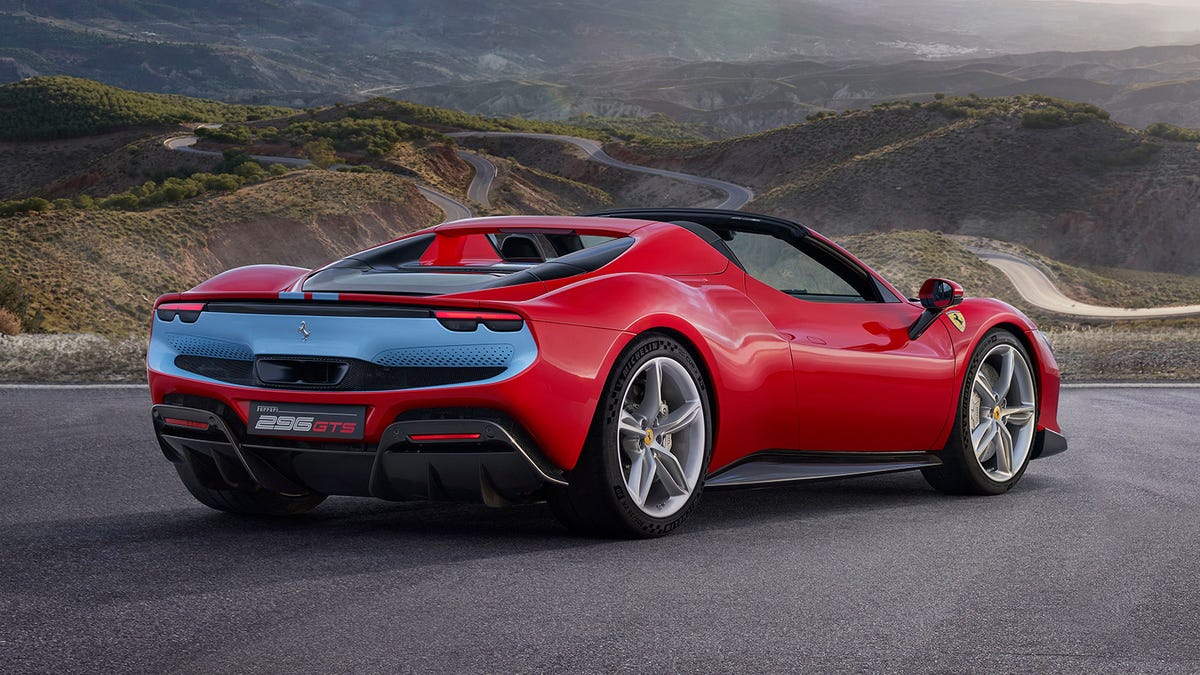The First Electric Ferrari Is Coming Soon, But Maranello Would Prefer You Didn't Focus on That

Image: Ferrari
At a time when even Lamborghini has acknowledged the death of its purely internal combustion engine-powered wedges, you’d be forgiven for assuming Ferrari, too, would be imminently bidding anything short of a hybrid goodbye. Not quite.
Maranello’s latest investor day did indeed bring the promise of the first every pure battery-electric Ferrari, due by 2025, according to Reuters. However, there was no roadmap for electrifying the rest of the stable; no market-baiting commitment to an end of the products the Prancing Horse makes best, thank goodness.
That’s not to say Ferrari isn’t thinking long and hard about EVs, and preparing its assembly lines for them in the background. The brand hopes EVs will contribute 40 percent of its overall sales mix by the end of the decade. It just doesn’t want them to dominate the conversation yet. From Reuters:
According to a source familiar with Ferrari’s business plans, a new production line focused on electric vehicles (EVs) should help lift annual production at its plant in Maranello, Italy, by more than 35% to over 15,000 cars by 2025 versus 11,155 in 2021 – or 65 cars per day versus 46 currently – delivering higher profit margins in the process.
Ferrari declined to comment.
The carmaker has told investors it is targeting a core profit (EBITDA) margin of 38-40% in 2026, versus 35.9% in 2021.
Its line-up could also grow to at least 17 models by 2026 from 12 today. But most new models will, at least initially, have a combustion engine – including its first SUV, the Purosangue, powered by its trademark huge 12-cylinder engine – though some may be hybrids.
Ferrari currently has four plug-in hybrids in its line-up.
Those four PHEVs, in case you need a refresher, are the SF90 and 296 in their respective coupe and convertible variants. The SF90 can go up to 8 miles on pure electric power, while the 296 almost doubles that to 15. So, yes — while they’re technically plug-in hybrids, it’s not a foregone conclusion that they’ll cover your daily round-trip commute in the same way that, say, a RAV4 Prime will. A chariot for the working class, these Ferraris ain’t. Go figure.
What Ferrari is really waiting for — indeed, what the entirety of this industry is desperately anticipating with mouths afoam — is the commercialization of solid-state batteries, that’ll theoretically offer better range for less of a mass penalty.
Ferrari can afford to take its time here, because it’s goddamn Ferrari and does whatever it pleases (except hold out on SUVs, apparently). Contrastingly, Lamborghini is probably more apt for EVs now because 1) it’s chained to Volkswagen, which has made electrification its entire brand and 2) lightness is almost never Lamborghini’s M.O.
But Maranello won’t be able to skirt by forever. The EU is angling to outlaw sales of new gasoline-powered cars in 2035; vehicles with synthetic, carbon-neutral fuels are up in the air, and Ferrari may get a slight grace period because it churns so few units a year. For the moment, the V12 is safe.



